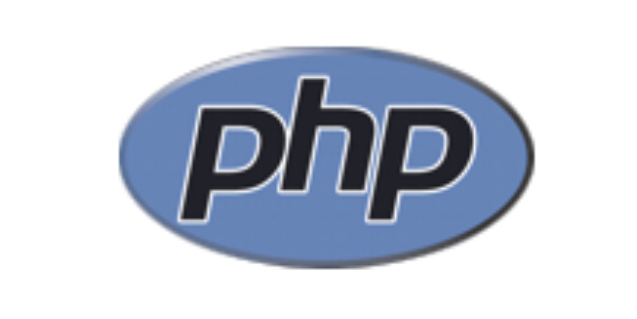
In this detailed tutorial, the reader is introduced to the intricacies of using the PHP cURL library. The guide delves into the essentials of cURL, its installation and configuration procedures, and practical applications such as executing HTTP requests, navigating redirects, and handling cookies. This narrative provides real-world examples, enhancing the reader’s comprehension of implementing the PHP cURL library in various projects.
The Essence of cURL
cURL stands as a multifaceted command-line tool and library, pivotal for data transfer via a multitude of protocols including HTTP, HTTPS, FTP, among others. The PHP cURL library, an encapsulation of the cURL tool, offers PHP developers a seamless integration of its features within their scripts. Renowned for its versatility and robustness, the PHP cURL library is a staple in API communications and server interactions.
Setting Up PHP cURL
To harness the power of the PHP cURL library, one must first ensure its presence and activation on their system. Although typically bundled with PHP, its activation is not always automatic. The installation and enabling process differs across operating systems:
For Windows Users:
- Procure the PHP cURL library (php_curl.dll) suitable for your PHP version from the PHP for Windows site. This first step is crucial, as it involves selecting the correct version of the library that is compatible with your current PHP installation. The PHP for Windows website provides various versions of the dll file, ensuring that you can find the one that matches your system’s specifications. This careful selection prevents potential compatibility issues, which are common stumbling blocks in setting up extensions;
- Place the downloaded DLL file into your PHP extensions folder (e.g., C:\php\ext). This step is about correctly locating the PHP extensions directory, which is where the PHP environment looks for additional modules. By placing the php_curl.dll file in this directory, you are essentially adding the cURL functionality to your PHP setup. This step is straightforward yet vital for the proper integration of the cURL library with your PHP environment;
- Modify the php.ini file to include `extension=php_curl.dll`. The php.ini file acts as the configuration file for PHP, dictating how the environment behaves. Adding the line `extension=php_curl.dll` is a directive to PHP to load the cURL extension upon startup. This step is crucial for activating the extension, as simply placing the DLL file in the extensions directory is not enough for PHP to recognize and use it;
- Restart your web server or PHP service to enact these changes. This final step is essential to apply the new configuration. Restarting the server or the PHP service allows for the php.ini file changes to take effect. Without this step, even if all the previous steps are correctly done, the new extension would not be loaded, and thus the PHP cURL functionality would not be available. This restart is a standard procedure in the world of web development whenever changes are made to the server or its configuration, ensuring that the current running environment is up to date with the latest settings.
There each step in the installation process of the PHP cURL library on Windows is elaborated, highlighting the importance of each step in the integration of the library with the PHP environment. This careful delineation of steps ensures that even those new to PHP or server configuration can successfully install and utilize the powerful functionalities offered by the PHP cURL library.
For Linux/Unix Users:
- Utilize package managers for installation, such as `sudo apt-get install php-curl` for Debian-based systems or `sudo yum install php-curl` for CentOS/RHEL systems;
- Post-installation, a web server or PHP service restart is required.
Utilizing PHP cURL for HTTP Requests
With PHP cURL installed and enabled, executing an HTTP request becomes straightforward. Consider a scenario where a GET request is made to a specific URL, and the response is displayed. This involves initializing a cURL session with `curl_init()`, setting the `CURLOPT_RETURNTRANSFER` option to true, executing the session with `curl_exec()`, and then closing it with `curl_close()`. This process demonstrates the ease and flexibility of the PHP cURL library in handling web requests. By manipulating various cURL options, developers can customize requests to suit specific needs, such as setting headers, managing timeouts, or handling SSL connections. The ability to fetch and process data from external sources seamlessly is vital for modern web applications. Furthermore, PHP cURL’s integration into the PHP environment allows for the incorporation of these web requests into larger, more complex PHP scripts, thereby facilitating the creation of rich, data-driven applications. This simplicity and power make PHP cURL an essential tool for PHP developers seeking to advance their web development capabilities.
Redirect Management in PHP cURL
PHP cURL does not inherently follow HTTP redirects. To enable this, one must set `CURLOPT_FOLLOWLOCATION` to true. This adjustment allows for seamless redirect navigation.
Cookie Management with PHP cURL
PHP cURL excels in cookie management during HTTP requests. An example is provided where cookies are saved to a file using the `CURLOPT_COOKIEJAR` option, and then utilized in subsequent requests via the `CURLOPT_COOKIEFILE` option.
Conclusion
This comprehensive guide has shed light on the PHP cURL library’s fundamentals, including its setup, and diverse functionalities like handling HTTP requests, redirects, and cookies. Mastery of the PHP cURL library is an invaluable skill for PHP developers, elevating the efficiency and capability of their projects. The guide not only educates on the basic mechanics but also dives into advanced features, offering a well-rounded understanding of the library’s potential. It emphasizes the importance of the PHP cURL library in modern web development, particularly in its ability to interact with APIs and handle complex web data interactions. By learning to effectively leverage this tool, developers can significantly enhance their web applications, making them more dynamic and responsive to user needs. Additionally, the guide highlights best practices and common pitfalls, ensuring developers are well-equipped to troubleshoot and optimize their cURL implementations. This holistic approach to understanding and using the PHP cURL library is crucial for any developer looking to broaden their skill set and develop more sophisticated PHP applications.